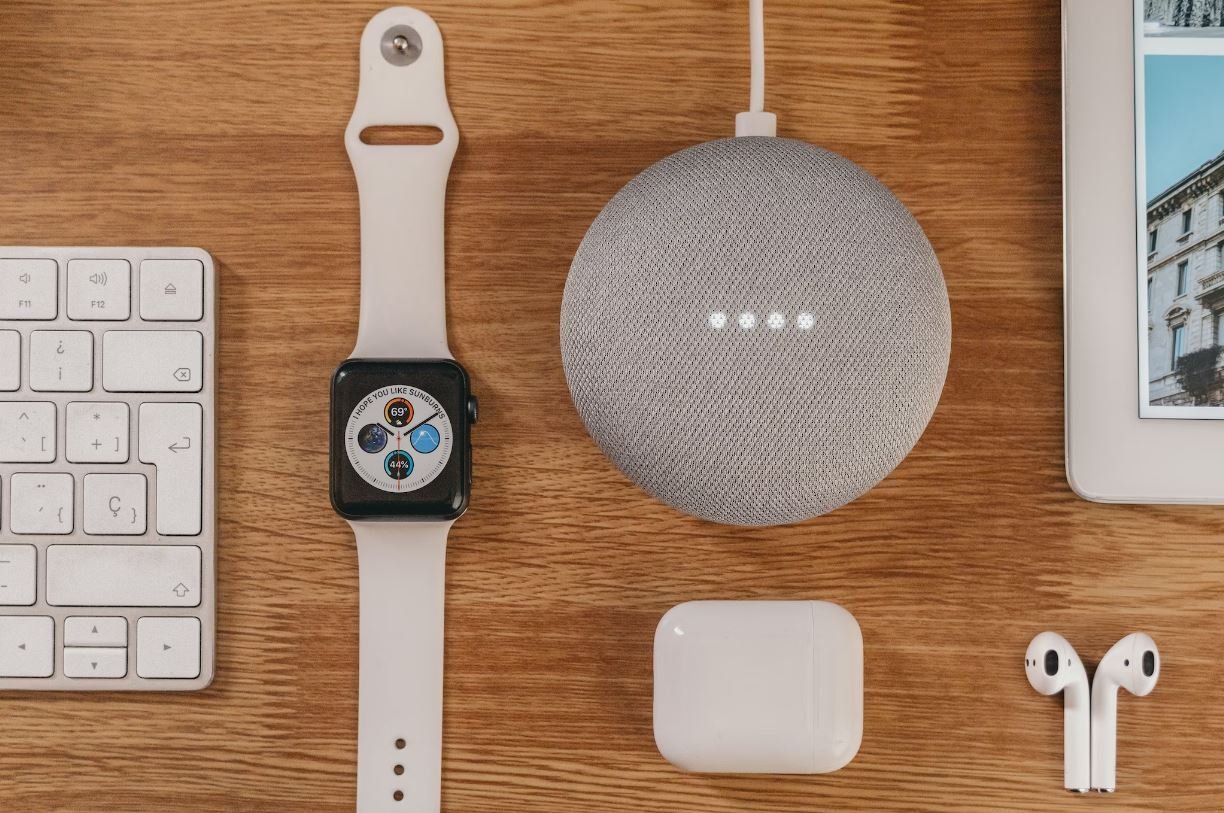How Technology Is Replacing Humans
Technology has been rapidly advancing and has started to replace humans in various industries and professions. With the rise of artificial intelligence and automation, tasks that were once performed by humans are now being done by machines. While this has led to increased efficiency and productivity, it has also raised concerns about job loss and the future of work.
Key Takeaways:
- Technology is replacing humans in various industries and professions.
- The rise of artificial intelligence and automation has led to increased efficiency and productivity.
- Job loss and the future of work are significant concerns.
One of the key areas where technology is replacing humans is in manufacturing. Machines can now complete repetitive tasks more quickly and accurately than humans, leading to improved production rates. This automation allows companies to reduce labor costs and increase their overall output. *This shift has resulted in significant job displacement, particularly for workers in industries heavily reliant on manual labor.*
Automation is also making its way into the service industry. From self-checkout machines at supermarkets to automated chatbots handling customer inquiries, businesses are using technology to streamline processes and reduce the need for human involvement. *This trend not only improves efficiency but also provides round-the-clock support for customers, enhancing their overall experience.*
Artificial intelligence is playing a crucial role in replacing humans in tasks that require cognitive abilities. For example, AI algorithms can now analyze large data sets and provide valuable insights much faster than humans can. This shift has significant implications for fields such as data analysis, financial planning, and even medical diagnostics. *Using AI in these areas can lead to more accurate predictions and better decision-making.*
| Industry | Jobs Affected by Automation |
|---|---|
| Manufacturing | Automotive assembly line workers, warehouse workers |
| Retail | Cashiers, retail salespersons |
| Healthcare | Radiologists, laboratory technicians |
While the impact of technology on the workforce is undeniable, it’s important to note that it also creates new opportunities. As certain jobs become obsolete, new roles emerge that require skills in technology and digital literacy. By adapting and acquiring these skills, individuals can position themselves for the jobs of the future. *This adaptability is crucial in the fast-changing technological landscape.*
It is essential for society to prepare for the ongoing transformation brought about by technology. Governments, educational institutions, and businesses should work together to provide retraining programs and create supportive ecosystems that foster innovation and collaboration between humans and machines. *By embracing these changes, we can ensure a smooth transition into a technology-driven future.*
Conclusion:
The continued development and integration of technology in various industries are gradually replacing humans in specific job roles. While this brings about both challenges and opportunities, it’s crucial for individuals and societies to adapt, acquire new skills, and foster collaboration between humans and machines to thrive in the future of work.

Common Misconceptions
Misconception: Technology will completely replace humans in the workforce
There is a common belief that technology will eventually render humans obsolete in the workplace. However, it is important to note that technology is designed to augment human capabilities rather than replace them entirely.
- Technology often requires human input for maintenance, programming, and troubleshooting.
- Human beings possess unique qualities, such as creativity and emotional intelligence, that cannot be replicated by technology.
- The integration of technology in the workforce enhances efficiency and productivity, leading to more job opportunities rather than replacing them.
Misconception: Robots will take over all jobs
Another common misconception is that robots will soon replace humans in every job sector. While it is true that automation has resulted in job displacement in some industries, it does not mean that robots will entirely take over all jobs.
- Many tasks require human decision-making, critical thinking, and adaptability, which robots currently lack.
- Some sectors, such as healthcare and education, involve complex human interactions that cannot be replicated by robots.
- The evolution of technology often leads to the creation of new industries and job opportunities for humans.
Misconception: Technology negatively impacts job security for humans
Some people believe that the advancement of technology leads to higher unemployment rates and job insecurity for humans. However, studies have shown that technology actually has a positive impact on job creation in the long run.
- Technology eliminates mundane and repetitive tasks, allowing humans to focus on more meaningful and fulfilling work.
- New technologies create demand for skilled workers who can adapt and operate them.
- Automation often reduces costs for businesses, resulting in the expansion of industries and the creation of more jobs.
Misconception: Technology decreases human interaction and social connections
Many people believe that the rise of technology leads to a decline in human interaction and social connections. While it is true that excessive reliance on technology can have negative effects, technology also provides numerous platforms for communication and connection.
- Technology enables people to connect and engage with others across the world through social media and online communities.
- Remote working and teleconferencing tools help maintain communication and collaboration despite geographical barriers.
- Technology offers innovative ways to foster social connections, such as virtual reality experiences and multiplayer online games.
Misconception: Humans are becoming overly dependent on technology
There is a concern that humans are becoming overly reliant on technology for various aspects of their lives. While technology has undoubtedly become integral to many activities, it is important to recognize that humans remain in control of how they use and integrate technology.
- Technology is a tool that humans can utilize to enhance productivity and efficiency.
- Humans have the ability to moderate their technology usage and strike a balance between the digital world and real-life experiences.
- It is essential for individuals to continuously learn and adapt to technological advancements to fully maximize its benefits and mitigate any negative impacts.

Introduction
In recent years, technology has advanced at an unprecedented rate, revolutionizing various aspects of our lives. From automated processes to artificial intelligence, technology has begun to replace certain human tasks and roles. This article explores ten intriguing examples showcasing the integration of technology into different industries and the impact it has on human involvement.
1. Robot Surgeons in the Operating Room
Advancements in robotics have paved the way for robot-assisted surgeries. These sophisticated machines offer precision, stability, and reduced invasiveness compared to traditional methods.
2. Automated Checkout Systems in Retail
Retail stores are increasingly utilizing self-checkout systems, allowing customers to scan and pay for their items without the need for a cashier. This streamlines the purchasing process and reduces waiting times.
3. Driverless Delivery Vehicles
Delivery services are exploring autonomous vehicles for transporting goods, eliminating the need for human drivers. These vehicles use advanced sensors to navigate safely and efficiently.
4. Chatbots for Customer Support
Companies now employ chatbots to provide customer support, eliminating the need for a human operator in basic inquiries. These virtual agents can provide instant responses, available 24/7.
5. Drones for Aerial Surveys
In sectors such as construction and agriculture, drones are replacing human workers for aerial surveys. These unmanned devices can quickly and accurately collect data and images from above.
6. AI-Powered Virtual Assistants
Virtual assistants like Siri, Alexa, and Google Assistant have become increasingly sophisticated, providing personalized help with tasks such as scheduling, reminders, and online searches.
7. Machine Learning in Financial Trading
Financial institutions use machine learning algorithms to analyze market data, predict trends, and automate trading decisions, reducing the need for human traders.
8. Robotic Vacuum Cleaners
Gone are the days of manually pushing a vacuum cleaner around. Robotic vacuum cleaners autonomously navigate and clean floors, freeing up time for other tasks.
9. Online Tutoring Platforms
With the availability of online tutoring platforms, human tutors can now be replaced by virtual tutors in various subjects. These platforms connect students with experienced educators through video calls.
10. Automated Manufacturing Processes
The manufacturing industry has greatly embraced automation, with machines performing various repetitive and labor-intensive tasks. This has increased productivity and efficiency in factories.
Conclusion
Technology’s rapid advancement has undeniably led to the replacement of human involvement in several fields. While this incorporation of technology has its benefits, it inevitably raises questions about the future of employment and the need for human expertise. As we continue to embrace technological developments, it is crucial to find a balance that maximizes efficiency while recognizing the value of human ingenuity and creativity.
Frequently Asked Questions
Q: What are some examples of how technology is replacing humans?
A: Examples of how technology is replacing humans include the use of automated systems in manufacturing, AI-powered chatbots for customer support, and self-checkout machines in retail stores.
Q: Why is technology replacing humans in certain fields?
A: Technology is replacing humans in certain fields because it can often perform tasks more efficiently, accurately, and cost-effectively. Additionally, advancements in automation and artificial intelligence have made it possible for machines to handle complex tasks that were once exclusive to humans.
Q: What impact does technology replacing humans have on the job market?
A: The impact of technology replacing humans on the job market can lead to job displacement, as certain roles become redundant or automated. However, it also creates new job opportunities in fields related to technology development, maintenance, and support.
Q: Are there any potential risks associated with technology replacing humans?
A: Yes, there are potential risks associated with technology replacing humans. These include increased unemployment rates, loss of job skills, and social inequality. There is also the concern of over-reliance on technology, which can lead to vulnerabilities in critical systems.
Q: How can individuals adapt to the increasing role of technology?
A: Individuals can adapt to the increasing role of technology by acquiring new skills that complement technological advancements. Continuous learning, staying updated with industry trends, and embracing automation can help individuals remain competitive in a technology-driven world.
Q: What are the benefits of technology replacing humans?
A: Some benefits of technology replacing humans include improved efficiency, increased productivity, reduced human error, and the ability to perform complex tasks at a faster pace. It can also lead to cost savings for businesses and enhanced convenience for consumers.
Q: Can technology completely replace humans in all occupations?
A: While technology has the potential to automate many tasks, it is unlikely to completely replace humans in all occupations. Certain roles that require advanced social skills, creativity, critical thinking, and empathy are likely to remain essential for human involvement.
Q: How does technology impact job satisfaction?
A: Technology can impact job satisfaction in both positive and negative ways. On one hand, it can enhance job satisfaction by automating repetitive and mundane tasks, allowing employees to focus on more meaningful work. On the other hand, it can lead to job dissatisfaction if individuals feel they are being replaced or if they lack the skills to adapt to technological changes.
Q: What are some ethical considerations regarding technology replacing humans?
A: Ethical considerations regarding technology replacing humans include issues related to job displacement, privacy concerns, bias in AI algorithms, and the responsible use of data. It is important to ensure that the adoption of technology is done ethically and with consideration for its impact on individuals and society as a whole.
Q: How can businesses effectively manage the transition of technology replacing humans?
A: Businesses can effectively manage the transition of technology replacing humans by providing training and upskilling opportunities for employees, fostering a culture of innovation and adaptability, conducting impact assessments to identify areas of automation, and ensuring open communication with employees throughout the process.




